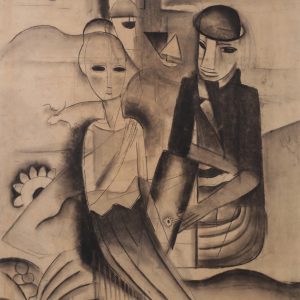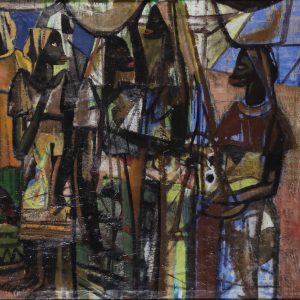FLORIS JESPERS 1889 – 1965
Floris Jespers – Zigzag aims to portray an artist who refused to be pigeonholed, but sought his own path between influences and the spirit of times. Freddy Campo knew him personally and was one of his biggest fans. In 1965, they worked together on preparations for a retrospective that was eventually held posthumously. In 1985, a major tribute exhibition followed at Campo Meir. Now, 60 years after the artist’s death, Guy Campo would like to draw attention to this ‘filou artistique’ with a modest project showcasing his versatile oeuvre, which testifies to a lasting curiosity, search, and experimentation.
Jespers was born in 1889 into an Antwerp family of artists and trained at the Antwerp Academy of Fine Arts. In the 1920s, he and his brother Oscar were part of the avant-garde circle with Paul van Ostaijen. Their collaboration and friendship placed him at the heart of the modernist movement in Antwerp, where visual art, literature, and music influenced each other.
He was often criticized for practicing all styles too volatilely. The accusation that he had ‘no style of his own’ haunted Jespers throughout his life. With statements such as ‘Da kan ik oek’ (I can do that too), he did not always make himself popular. In later life, he described his approach to movements such as cubism, expressionism, and surrealism as making soup. ‘The woman puts all kinds of legumes in the soup, then passes it through a sieve and takes the best bits, throwing the rest away. That’s what I did with the -isms.’ He took what was useful and discarded the rest. In short, a master synthesist, in the words of Stijn Vanwijnsberghe.
The exhibition follows Jespers’ winding path like a walk through the major movements of the twentieth century, ending with his colorful African works from Congo, where he lost his heart, as he himself says: “In Congo, I found what I needed. That’s where I really lived.”






